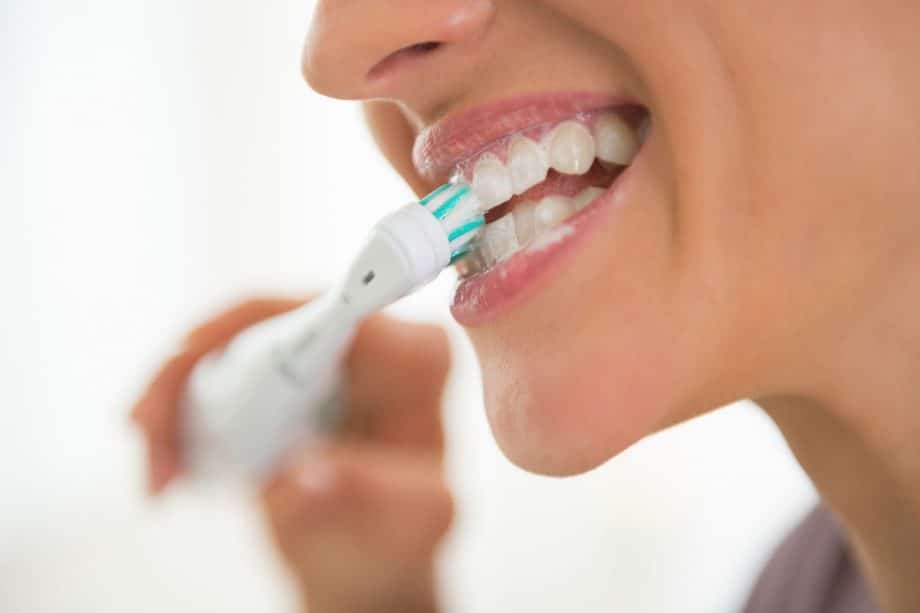Electric toothbrushes make home oral care highly efficient. Since they add vibrating or rotating motion, they can sweep away more plaque and food debris in each brushing session.
This blog will explain the three top benefits of an electric toothbrush, educate patients on proper technique, and answer commonly asked questions.
Benefit #1: Remove Plaque Effectively
When they are used correctly, electric toothbrushes remove more plaque than manual toothbrushes. Proper brushing leaves teeth sparkling clean and smooth to the touch, and it may also help remove or prevent surface stains.
Benefit #2: Lower Chance of Gum Disease and Tooth Decay
Improved plaque removal leads to a lowered chance of oral health problems like dental cavities and gum disease.
Tooth decay occurs when plaque bacteria release toxins that break down the enamel and expose the vulnerable inner tooth. Removing plaque prevents it from gaining a foothold and causing decay.
The cause of gum disease is tartar or calculus, a hard substance formed by plaque and food particles. When tartar builds up at the gumline, bacterial toxins attack the gums and bones that support your teeth.
Effective plaque removal significantly reduces tartar formation. However, an electric toothbrush cannot remove tartar deposits. Only a professional cleaning can do this.
Benefit #3: Improve Oral and Overall Health
A lower tooth decay and gum disease risk leads to better oral health. Patients who take conscientious care of their teeth using an electric toothbrush may be able to avoid some costly procedures like tooth extractions, root canals, and dental implants in later life.
Oral surgeons also emphasize the connection between oral and overall health. For example, researchers link gum disease to severe health issues like stroke, heart attack, diabetes, and preterm birth. Properly using an electric toothbrush may help to reduce your chance of developing these disorders.
How to Use an Electric Toothbrush
Start with a clean, fully-charged toothbrush in good condition. Apply an approved fluoride toothpaste suggested by your dentist or oral surgeon.
Hold your toothbrush at a 45-degree angle to focus on where the gums and teeth come together. Divide your mouth into four sections and spend at least 30 seconds brushing each. Brushing for a full two minutes brings you the most benefit.
Frequently Asked Questions About Electric Toothbrushes
If I use an electric toothbrush, can I skip flossing?
Even if you use an electric toothbrush, flossing is an essential step. Floss removes plaque and food that even electric bristles cannot reach. Combining an electric toothbrush with diligent daily flossing will benefit your oral health.
How often should I replace the head on my electric toothbrush?
In general, you should replace your electric toothbrush head every three months. Replace it sooner if it is becoming worn or has split or splayed bristles.
Call Upper West Side Oral & Maxillofacial Surgery
Your oral surgeon and family dentist urge you to look into the benefits of an electric toothbrush for improved plaque removal.
Preventive care at home and in the dental office can reduce your need for invasive procedures later in life. Please call our Upper West Side, Manhattan, office at 212-466-6984 to schedule an appointment today.


